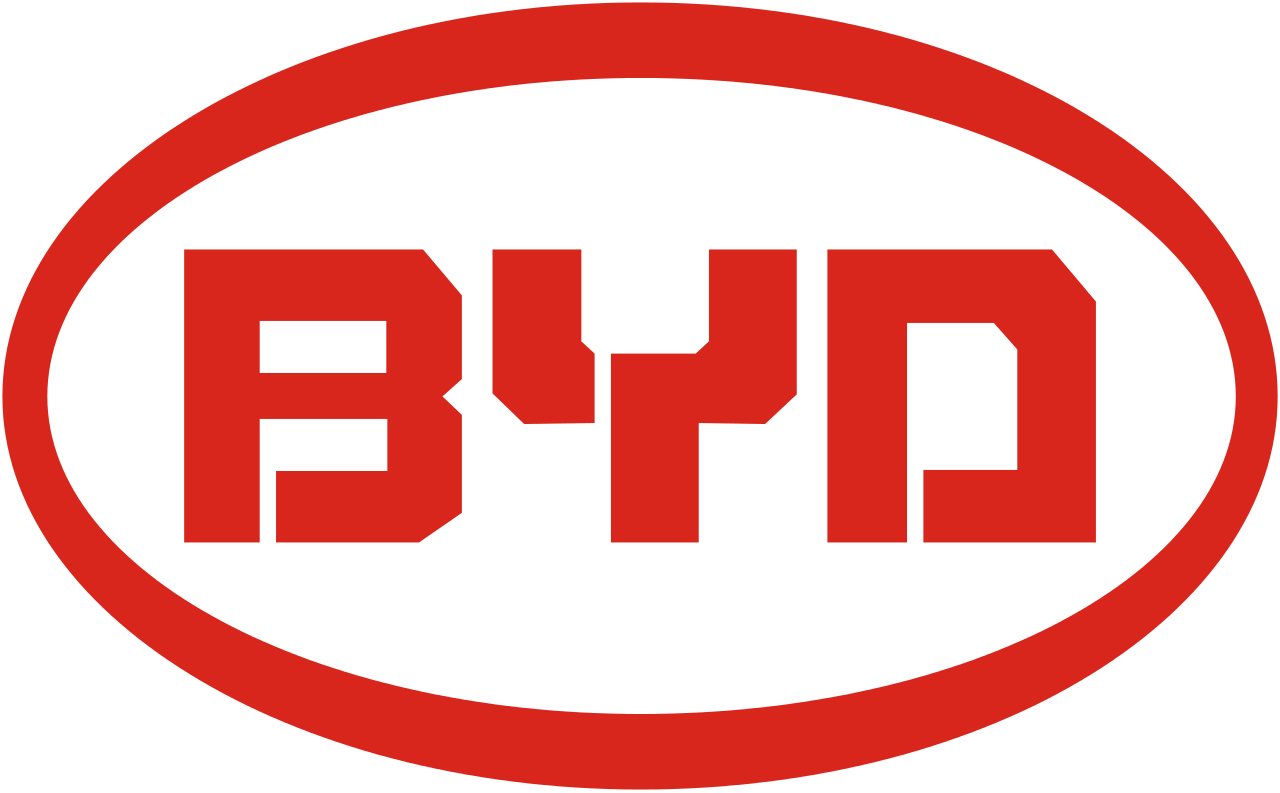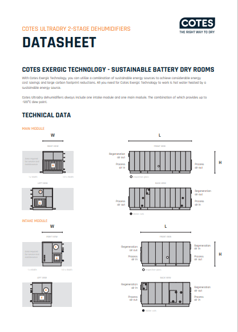DANGEROUS GASSES
Lithium reacts intensely with water, forming dangerous combinations of lithium hydroxide, highly flammable hydrogen and heat
Choose the most energy-efficient and sustainable dry-air solution for your battery dry room in gigafactories.



























Battery dry rooms play a vital role in the battery industry, ensuring optimal performance by maintaining low humidity levels, preventing moisture-related issues, and promoting consistent manufacturing processes. Maintaining a constant and ultradry humidity level requires a lot of energy. Battery dry rooms represent 43% of the total energy used in battery production process.
With Cotes Ultradry adsorption dehumidifiers, you can cut that energy consumption dramatically and source the remaining energy from sustainable energy sources.
Energy-efficient solution reducing electrical energy consumption up to 85%
Reducing total cost of ownership, CAPEX and OPEX, up to 50%
Optimum humidity control with dew points as low as -120°C
Number of battery dry rooms around the world using Cotes ultradry adsorption dehumidifiers
Energy-efficient solution reducing electrical energy consumption up to 85%
Reducing total cost of ownership, CAPEX and OPEX, up to 50%
Optimum humidity control with dew points as low as -120°C
Sustainable solution using renewable energy sources
With Cotes Ultradry adsorption dehumidifiers, you obtain high energy savings, reduce costs, and use sustainable energy sources.
Contact our highly skilled team and learn more about the right way to dry your battery dry room for the highest energy efficiency.
Each unit is designed to handle large volumes of air of up to 32.000 m3/h
Discover our extensive selection and let us find the right way to dry for you. Our Cotes Ultradry consist of one main and one intake module.
|
Main Module |
|
|
Minimum airflow |
3300 - 8000 m3/h |
|
Maximum airflow |
15000 - 34000 m3/h |
|
Connected load |
52 - 110 kW |
|
|
|
|
Intake Module |
|
|
Minimum airflow |
1500 - 8000 m3/ |
|
Maximum airflow |
5000 - 20000 m3/h |
|
Connected load |
78 - 175 kW |

The graph below shows the different sources’ energy contributions to the total cell production and battery pack assembly energy in a typical battery manufacturing facility represented as Index 100. [SOURCE] Data from Yuan et al. (2017).

How many hours a year is your dry room operational? In other words, how many hours a year is your dry room staffed and producing batteries?
Conventional systems are dependant on ice water that requires more energy to generate. To dry a dry room you need both a heating and cooling source. What is your cooling source price in EUR/kWh?
Conventional systems are limited to either electricity and/or gas as a regeneration heating source. Cotes Exergic Technology however makes it possible to select a combination of sustainable sources of regeneration heating.
Because dry rooms operate at extremely low dew point it makes a big difference how many people work in the dry room at one time.
What is your prefered nominal operating dew point inside your dry room? Cotes Exergic Technology can reach dew points of -120°C in an unstaffed room, though we see most dry rooms only need to maintain a dew point of -60°C.
The issue with current non-Cotes dehumidification is their high dependency on only electricity and gas. Cotes Exergic Technology allows you to choose a combination of sustainable energy sources like:
Depending on your sustainable source of energy to heat the hot water at 80°C-90°C in Cotes Exergic Technology, you can save up to 92% energy consumption in your dry room.
Send us your contact details and our highly skilled team will reach out to find the right way to dry your battery dry rooms with Cotes Ultradry.
The challenge associated with existing non-Cotes dehumidification systems lies in their heavy reliance solely on electricity and gas, coupled with inefficient air-drying methods operating at very high temperatures. This combination creates an unstable and hazardous operating environment.
Cotes developed the Exergic Technology®, an innovative solution maximising energy savings by using three rotors and sustainable energy sources.
With the patented Cotes Exergic Technology®, you can utilise a combination of sustainable energy sources to achieve considerable energy cost savings and large carbon footprint reductions. All you need is hot water at 80-90°C heated by a sustainable energy source:
Because the energy to heat the water can come from a combination of sustainable energy sources and can be changed in the future if the price of energy changes, it makes the Cotes Exergic Technology more sustainable and more future-proof. This flexibility is not possible if the dehumidifier is built for gas regeneration specifically.
**Cotes does not recommend or consider gas as a source of sustainable energy due to the environmental footprint. We recommend utilising energy for the hot water from sustainable or “green” energy sources instead. However, if gas is a requirement, the water can come from a central gas boiler.
Moisture poses a significant challenge in battery production, as it can lead to corrosion, electrolyte degradation, and diminished battery performance.
Battery production involves the handling of chemicals, solvents, and flammable materials. By maintaining a dry environment, you eliminate the risk of accidents and fires.
Moisture can cause oxidation or degradation of these materials, compromising electrode performance and overall battery reliability.
Fluctuations in temperature and humidity can introduce inconsistencies in the manufacturing process, leading to variations in battery performance and quality.
To safely manufacture lithium-ion batteries you need a relative humidity of less than 1% because of the delicate chemistry involved. Maintaining this %RH is energy-intensive and costly if you don't have the right dry-air solution.
Lithium reacts intensely with water, forming dangerous combinations of lithium hydroxide, highly flammable hydrogen and heat
Exposing lithium to humidity levels above 1% impacts quality, performance and lifespan of batteries
Energy expended to control humidity results in high operating costs and affects profit margins
Any humidity irregularities can affect your battery production and output
Service and maintenance costs increase to counter the effects of humidity without the right ultradry-air solution
Inefficient processes that use excessive energy from unsustainable sources of energy only lead to further negative environmental impact